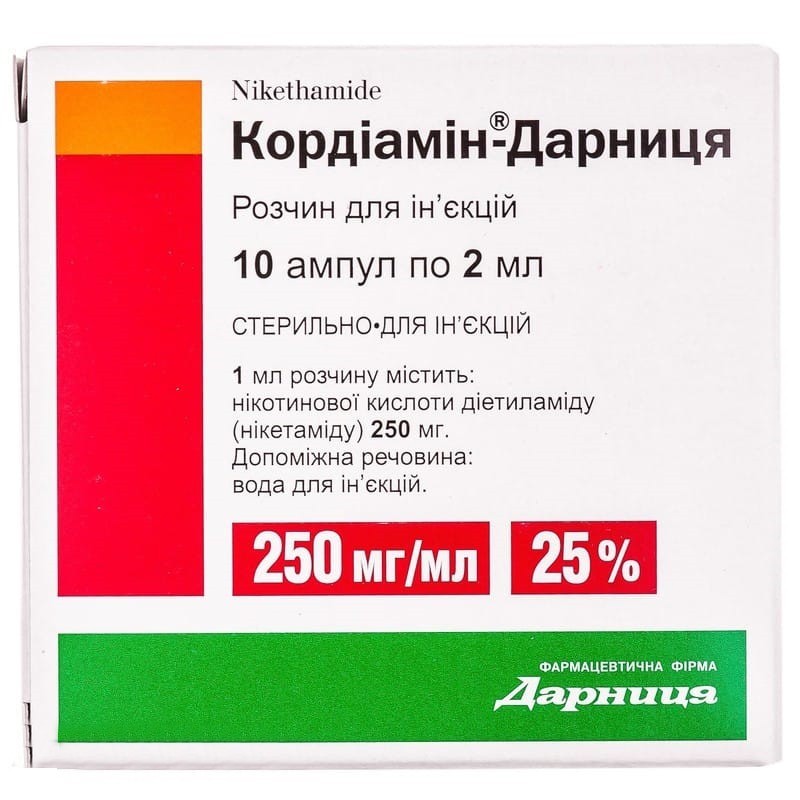



 Secure and encrypted payment processing
Secure and encrypted payment processing We ship to over 40 countries including the USA, UK, Europe, Australia and Japan
We ship to over 40 countries including the USA, UK, Europe, Australia and Japan Guaranteed refund or reship if you haven't received your order
Guaranteed refund or reship if you haven't received your orderanaleptic mixed type of action. The mechanism of action consists of 2 components: central and peripheral. the first is associated with a direct effect on the vasomotor center of the medulla oblongata, leading to its excitation and mediated increase in systemic hell (especially with primary suppression of this center). the peripheral component is associated with the excitation of carotid sinus chemoreceptors, leading to an increase in the frequency of respiratory movements and the depth of breathing. with the on / in the introduction of the drug, the rhythm accelerates, the frequency and depth of respiration increases, hell increases insignificantly and briefly. the drug does not perform a direct stimulating effect on the heart and does not reveal a direct stimulating vasoconstrictor effect.
Pharmacokinetics Cordiamine is well absorbed into the blood by all methods of administration, is relatively rapidly destroyed, and does not last long (15-60 minutes). In the body, it is metabolized in the liver to nicotinamide, nicotinic acid monoethylamide, nicetamide N-oxide. It is rapidly excreted in the urine in the form of inactive metabolites.
Collapse and asphyxia (including asphyxia of newborns), a shock state during surgical interventions and in the postoperative period, acute and chronic circulatory disorders, decreased vascular tone and respiratory depression in infectious diseases and during convalescence, poisoning with sleeping pills and analgesics (as part of a complex therapy).
A single and daily dose, frequency of administration is determined individually by the doctor, depending on the indications and age of the patient. the drug is administered s / c, in / m, in / in. adults and children over the age of 14 are prescribed 1-2 ml 1-3 times a day. for iv administration, a single dose of the drug is diluted in 10 ml of 0.9% sodium chloride solution; administered in 1-3 minutes the highest doses for adults s / c: single - 2 ml, daily - 6 ml. the highest single dose s / c and iv in case of poisoning for adults - 5 ml. children are prescribed s / c, depending on age, such single doses:
Enter 1-3 times a day.
Hypersensitivity to niketamide or any of the components of the drug; tendency to convulsions, epilepsy, epileptic seizures (history); porphyria; hyperthermia in children.
From the central and peripheral nervous system: anxiety, increased irritability, anxiety.
From the digestive tract: nausea, vomiting.
From the cardiovascular system: arrhythmias, hypertension, tachycardia.
From the musculoskeletal system: muscle twitching, starting with the circular muscles of the mouth, tremors, muscle stiffness.
Dermatological disorders: redness, face paste, itching and peeling of the skin.
Violation of the body as a whole: hyperthermia, increased sweating.
Allergic reactions: hypersensitivity reactions, including urticaria, angioedema, generalized papular rash.
Reactions at the injection site: infiltration, soreness, hyperemia, itching, burning sensation at the injection site.
The drug is used only under the supervision of a doctor in a hospital. with a / in the introduction is valid for a short time. since subcutaneous and intramuscular injections of cordiamine are painful, procaine is administered in advance to reduce the severity of pain at the injection site (for adults - 1 ml of 0.5% solution, for children - in accordance with age-related dosages). before the introduction of procaine, a test must be performed. when using procaine, information on the safety of procaine should be considered.
Use during pregnancy and lactation. The drug is contraindicated during pregnancy and lactation.
Children. The drug is approved for use in pediatric practice at recommended age doses.Contraindicated in case of hyperthermia.
The ability to influence the reaction rate when driving vehicles or working with other mechanisms. During the treatment period, you should avoid driving vehicles and performing potentially dangerous activities associated with the need for concentration and increased speed of psychomotor reactions.
The analeptic effect of cordiamine decreases under the influence of pascus, saluside, phenothiazine derivatives (chlorpromazine, etc.). chlorpromazine and reserpine may enhance the convulsive effect. the pressor effect of the drug increases under the influence of MAO inhibitors. cordiamine promotes the development of intolerance to phthivazide. enhances the effects of psychostimulants, antidepressants. reduces the effect of narcotic analgesics, sleeping pills, antipsychotics, anxiolytics, anticonvulsants.
Against the background of deep anesthesia, Cordiamine does not work.
Symptoms: increased severity of side effects of the drug; in high doses, the drug can cause generalized tonic-clonic convulsions, the development of impaired consciousness and breathing, apnea during convulsions, a fatal case is not excluded. treatment: the use of anticonvulsants, forced diuresis. if necessary - ivl.
In the original packaging at a temperature not exceeding 25 ° C. do not freeze.